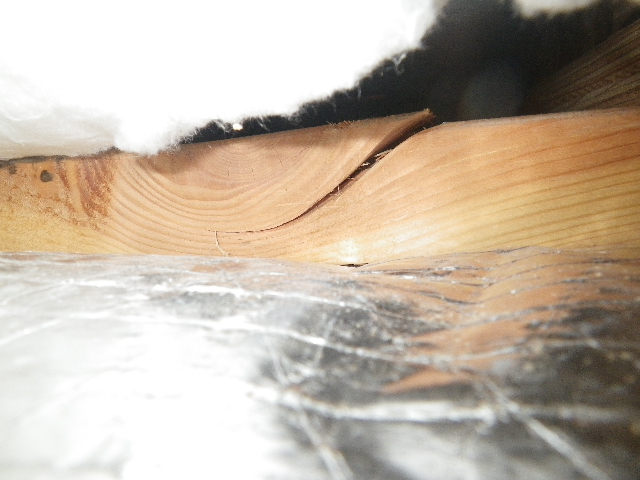
Inspecting dryer vents should be as dull as doing laundry
 Inspecting dryer vents should be as dull as doing laundry but, unfortunately, sometimes isn't. It doesn't take much effort to lift the flaps on the vent termination if it is somewhere near ground level but if it's on the roof or high on a second floor wall, the inspector won't be able to reach it for inspection. Adding to the problem is that the inspector is supposed to check the condition and length of the exhaust piping but not required to comment on the interior of the line. It's worth doing both.
I ran into the height problem late last week. If you look just to the right of the dormer, you can make out the termination points for the laundry vent and the dryer exhaust. The exhaust is on the right and is gapped slightly open. Since I knew the dryer wasn't running, I grabbed binoculars and could see the lint piled high at the opening.
Inspecting dryer vents should be as dull as doing laundry but, unfortunately, sometimes isn't. It doesn't take much effort to lift the flaps on the vent termination if it is somewhere near ground level but if it's on the roof or high on a second floor wall, the inspector won't be able to reach it for inspection. Adding to the problem is that the inspector is supposed to check the condition and length of the exhaust piping but not required to comment on the interior of the line. It's worth doing both.
I ran into the height problem late last week. If you look just to the right of the dormer, you can make out the termination points for the laundry vent and the dryer exhaust. The exhaust is on the right and is gapped slightly open. Since I knew the dryer wasn't running, I grabbed binoculars and could see the lint piled high at the opening.
By now, most homeowners have seen/read/heard that a clogged dryer line can cause a fire. When the dryer is operating, the designers expected the heat to flow out the exhaust line and dissipate. If the line is partially or fully plugged, this out-flow is restricted, increasing the heat at the dryer. And the lint? It counts as a combustible material.
But there is a second problem with clogging the pipe. What happens to the water? You know, all that moisture in the damp exhaust that makes those billowing clouds of steam in winter?
If you said it gets trapped in the line, you win an award. Feel free to celebrate because that's exactly what happens. I hit the attic in the house above and found wet insulation. First instinct is to start 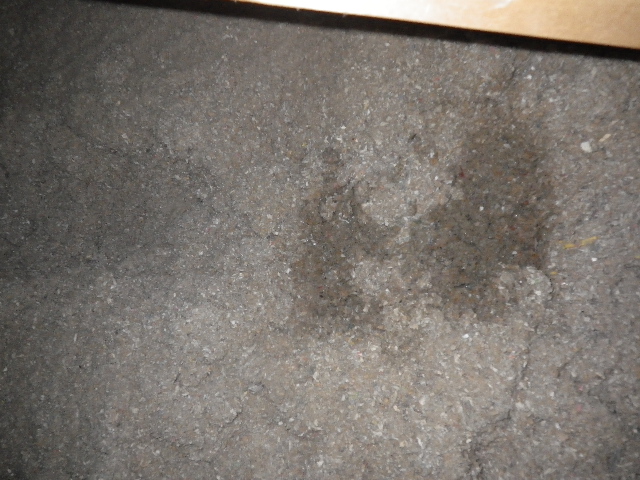 looking up for the source of the water. Not a sign of moisture on any of the sheathing or framing materials.
looking up for the source of the water. Not a sign of moisture on any of the sheathing or framing materials.
I reach down and touch it. Yep, definitely wet.
Then I looked to the right, toward the exterior wall. Another wet spot and, finally, the light goes on. The water wasn't coming from above. It was getting forced into the attic space by the dryer below.
The vent piping was plugged and the excess moisture was blowing through every joint in the piping. (They had used duct tape for the joints - another bad idea as it won't hold.)
I checked the OSB sheathing. It was wet but hadn't begun to develop mold or lose integrity. Given another year, this would have transitioned from a moderate problem to a big problem.
The solution for my client was two-fold. First, get the dryer vent line cleaned. Second, make sure it meets the current best practices.
The solutions for dryer line blockage are pretty straight-forward and industry recognized. The pipe material should be rigid or semi-rigid metal ducting (NOT the white vinyl and preferably not the ribbed Mylar), have a length of no more than 25 feet (not counting turns-turns reduce the allowable length because they slow air flow), and vent to the exterior of the home. You shouldn't use screws to connect segments of pipes (lint gets captured on the screws), use an approved heat tape for joints instead of duct tape, and the point of exhaust should not have a screen. Easy. Not done correctly often but easy.
Inspecting dryer vents should be on your annual to-do list.If you have a vertical run that terminates on the roof, think about doing it more often. Clean it often, at least every year. It's better for you home and -added bonus - the improved efficiency will save you money.
Pregnant? New Home in the Country? Please - test your well for nitrates.
“I have a daughter in her childbearing years,” Brender said. “If she were on a private well, I would tell her to have her well-water tested or drink bottled water.”
There's a powerful emotional reason for her to encourage you to test your well for nitrates. That quote is from an article from NBC News about a rash of birth defects in the Yakima area. The children affected have anencephaly, a condition in which they’re born missing parts of the brain or skull.
The CDC hasn't issued a reason for the sudden rash, or cluster as they phrase it, of birth defects, but they also admit that they haven't done the kind of intense in-person and in-place survey likely to find an obscure cause, something that might be as simple as they all purchased produce from the same farmer.
Yakima is a major growing area in Washington State, especially for fruits and vegetables while the regions to the East, the Palouse tend more towards grain and legumes. Still, they share a commonality - fertilizers and pesticides.
Research has shown that there are potential links between anencephaly and exposure to molds and to pesticides, Ashley-Koch said. Central Washington is a prime agricultural area that produces crops from apples and cherries to potatoes and wheat, which may require pesticides that contain nitrates.
So, if you are in a young family, planning on children and buying a home with a private well, please spend the $75 (or thereabouts - I haven't priced it recently) to get the well tested.
You never know - the money you spend to test your well for nitrates may end up being the best investment you've ever made for your children.
Some days, I don't inspect houses. . .
And now, for something totally different. A restaurant. They're always interesting. Sometimes, though, you see stuff and you scratch the joint from the "favorite eateries" list. Don't think that will happen today. Just a note - there are no state standards for commercial inspections. When Washington passed the Home Inspector Licensing law and the regulations wee written, the limit was set at 4-unit buildings to comprise residential construction.
Commercial inspections usually follow ASTM standards but can be modified by any of the parties to include more or less information. As an example, I do ADA (American with Disabilities Act) surveys to help businesses stay in compliance with federal law. The ASTM standard specifically excludes this type of work but nothing prevents me from performing it - or charging for it. It's an extra fee.
Motivational Monday
Hello, Cold White Stuff
Snow and adolescence are the only two problems that disappear if you ignore them long enough. ~Earl Wilson
When it snows, you have two choices: shovel or make snow angels. ~Anonymous
A lot of people like snow. I find it to be an unnecessary freezing of water. ~Carl Reiner
Note to self - play with the grandkids and make some snow angels - soon, before they grow too big and think it's too dumb.
Have a GREAT week!
Paul
So what happens if it DOES snow?
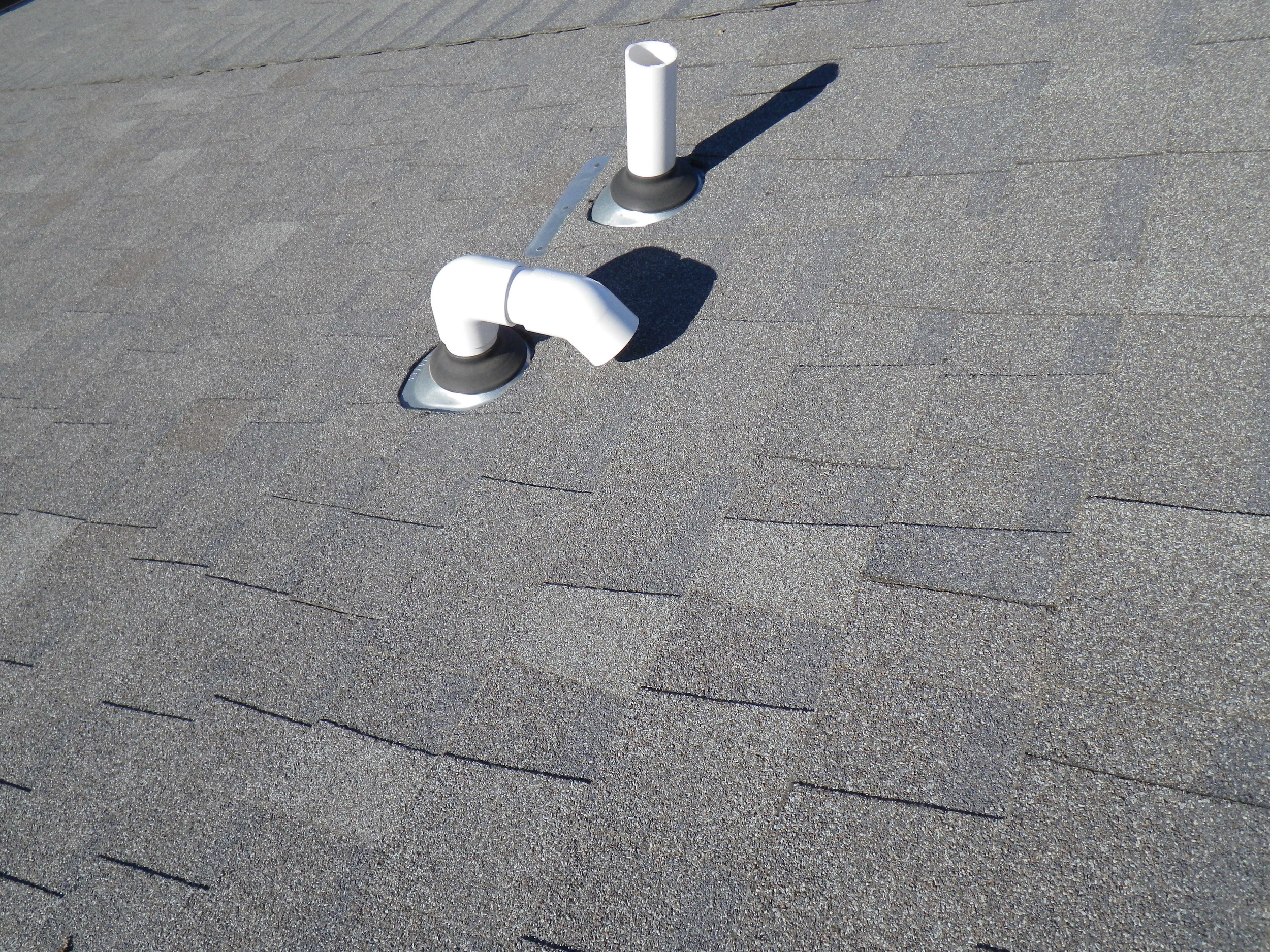 One advantage of living in Asotin is that the whole Lewis-Clark valley is considered to be a 'banana belt'- we're normally 10 degrees warmer than the surrounding prairies.
We're also a desert. The average rainfall in Lewiston, Idaho is about 13 inches per year. Pullman get about 20 inches which makes it a semi-arid desert but the great soil in the Palouse hold water well and allows for dry land farming. A lot of their moisture happens this time of year, in the form of snow.
One advantage of living in Asotin is that the whole Lewis-Clark valley is considered to be a 'banana belt'- we're normally 10 degrees warmer than the surrounding prairies.
We're also a desert. The average rainfall in Lewiston, Idaho is about 13 inches per year. Pullman get about 20 inches which makes it a semi-arid desert but the great soil in the Palouse hold water well and allows for dry land farming. A lot of their moisture happens this time of year, in the form of snow.
In the valley, we snicker. Most of the time, if we get 'snow', it's a dusting and we broom it off as we get on our way. Very little fuss.
This leads the builders in the valley to occasionally entertain bad ideas on what constitutes good construction. If you take a quick gander at the picture above, you can see a prime example.
The picture was taken on an inspection of a brand new home. Can you see the problem?
Yep, whoever it was that pointed out the air intake (the curved one) is way too close to the roof deck wins a Tootsie Pop.
The intake should be much high off the roof deck (I recommended 12") so that, in the event of snow, it doesn't get blocked. The ultra-high efficiency furnace that is connected to the intake has a sensor that measures how much combustion air is getting pulled in. If it doesn't sense enough air, the furnace will not start.
Bad.
It's winter and we definitely want the furnace to fire off and keep our tushes warm. We also don't want to make a service call (on overtime rate because it always happens that way - Murphy's Law is immutable and irrepressible) to get a perfectly acceptable system working again. And even if you know what the problem is, do you really want to climb onto a snow covered roof to fix it?
This is an easy fix. Add some height to both the exhaust and air intake. Viola, end of this particular problem.
And yes, it should have been caught by the building official but cut them a little slack. Like the rest of us, they're human and can miss something. Yes, it should have been caught by everybody up and down the construction cycle. That's why you hire an inspector, even for new homes-we're the last link in the chain of people (builder, contractors, code official, agent, inspector) that are trying to make you happy in your new home.
Keep that intake clear and stay warm, folks.
Never Trust the Seller's Inspection
Never trust the seller's inspection - not even mine. I know, I guarantee mine but let me tell you a little story about a small house that had a big problem.
I did not do the seller's inspection. I was working for the buyer in a house that was built in the later part of the 1920's. The listing agent had offered to sell the report that his client had to the my client but he, fortunately, wanted independent eyes. No problem.
Everything was tracking pretty normally for a house of that vintage until I got into the crawlspace. Skinny one and I couldn't get to the front half of the home due to the total lack of clearance. I'm skinny but even I wasn't getting there without a shovel - and I deliberately don't carry one on the truck. Same thing with hammers. They both encourage risky behavior in the inspector.
One tool that I do carry into the crawlspace is a 4" awl for probing wood. Even a sound piece of wood can harbor a surprise or two so testing is the best method of determining what's there. A rock hammer is also useful - sometimes you can hear the difference between sound wood and something that is riddled with pests.
In this case, I knew there was a problem reasonably quickly since white icky stuff (fungus of some sort, obviously) should not be eating the framing members. It's just bad form. Also, might not be too healthy to live around.
Fungus is usually going to grow in high humidity/moisture environments. Dry rot is actually wood-destroying fungus and doesn't happen when things are dry.
If you look at the picture, you can see the handle of the awl. Now, for those that don't know me, I'm not a power lifter. I'm a long distance runner with the arms of a long distance runner. The fact that I could embed that awl to the hilt was not good news. That the main beam dropped 2" because of rot was not good news.
What was really disturbing to me was the buyer was not apprised of these conditions in the disclosures. Which means that the other inspector thought the space was too tiny to get into and didn't try.
Fortunately, my client was a trust but verify kind of investor. Will the deal go forward? Don't know, that's not my part of the job. Mine is to give good, solid information. If the client hadn't retained me, he wouldn't have had the accurate data to make his decision.
Hire the Skinny Inspector
This is a part of an on-going joke about why you hire the skinny inspector.
Today's inspection had me practicing my Houdini routine to get into a crawlspace that the current owner didn't even know was there. I'm guessing her inspector, if he's still around, is due a phone call. Anyway, here's the picture. It was actually pretty darn tight, especially trying to get 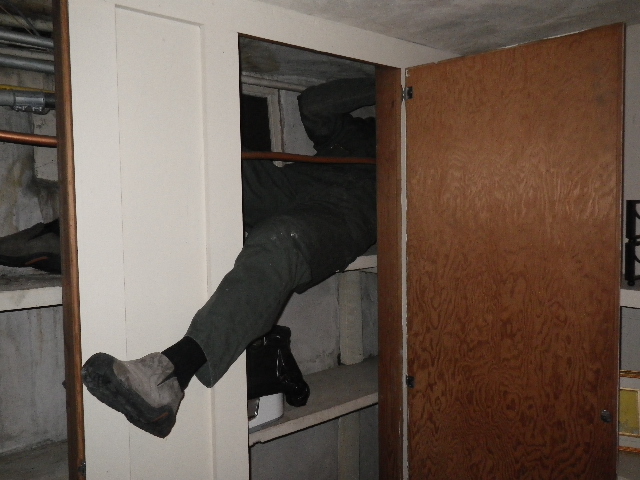 back out. Many thanks to my client for snapping the pic - super-nice folks and a grand old house.
back out. Many thanks to my client for snapping the pic - super-nice folks and a grand old house.
Obviously, one of the recommendations that I'll make is to increase the size of the access. They actually have plenty of room to do so but nobody ever bothered. If nothing else, it will make it easier to add the vapor barrier and insulation that are missing.
In the meantime, it's a win for a skinny inspector-me!
Hope you had as much fun working today as I did.
Prep Season
We've cleared the holidays when everyone in real estate takes some time off. No one wants to move at Christmas so many folks don't have their house on the market, waiting instead until after the New Year. In other words, now. I'm starting to see a strong uptick in seller's inspections as folks prep their house for entry into the market. Something to consider is that the first audience for your home is the other real estate agents. Once listed, they'll be touring your home so that they can be ready to refer their clients to appropriate properties.
If you have any little projects (and maybe some big ones) that you want to complete during the late winter/early spring, talk to your agent about waiting until the projects are complete before putting the house up on tour. First impressions can be critical and you don't want to jump the gun.
And, if your agent has suggested some repairs, I strongly recommend that you consider them. They know what is concerning to the buyer - they work with them daily.
For more advice on sellers inspections, check out my posts here.
Cracked Heat Exchangers
Cracked heat exchangers are not just expensive - they can be dangerous as hell. First, background. A gas-fired furnace (oil, too) has two different air-handling systems. The one most people think about is the blower that moves that wonderful warm air through the house on days where the temps, like today, are in the single digits.
The second system is the air supply for the burning of the gas. The furnace needs this air for combustion. The resulting flue gases are a mix of the air, minus a goodly portion of oxygen, and the fuel, minus a goodly portion of the chemical energy. That's where the heat comes from.
To get it into the house, we need to move the heat from the combustion cycle to the air-handling equipment. That's the role that the heat exchanger plays. It's a shell of metal that contains the noxious gases of combustion. The walls of the exchanger heat up and transfer the heat to the air driven by the blower.
The old furnaces from the 1960's and early 70's had thick shells and some of those old Lennox's can be hard to kill with anything short of a bazooka. Newer furnaces, especially the ultra-high efficiency condensing furnaces, don't last nearly as long. The new ones have much thinner shells and, to create greater surface area for the heat transfer, lots of dimples in the surface. Consequently, they tend to suffer metal fatigue faster than the old furnaces. Failures in heat exchangers have been reported in units that are only 15 years old.
Back to the noxious gases. What happens when the heat exchanger cracks? Well, we no longer have a separation between the gases and our interior air, the atmosphere that we breathe. The flue gases escape into the living 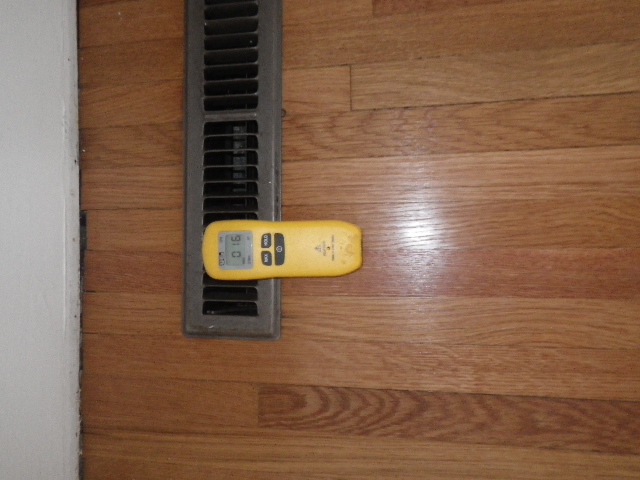 spaces. The principal gas? Carbon monoxide.
spaces. The principal gas? Carbon monoxide.
The reading on my handy little toy there indicates that the furnace is releasing 16 parts per million of carbon monoxide. As a reference, at levels above 9 parts per million, carbon monoxide begins to affect health. At 35 parts per million, it becomes toxic. These are based on 8 hour exposure cycles, about the amount of time you spend (hopefully) sleeping.
There are a couple of things that you can do to protect yourself. First, have the furnace serviced on a regular basis and make sure you specify that the heat exchanger is inspected for cracks. While you would think that it would be routine, my experience in this area is that it isn't.
Second, install carbon monoxide detectors. They are relatively inexpensive. In older homes, it is perfectly acceptable to use either the plug-in type or ceiling mounted battery operated detectors. In newer homes in Washington State, they are required to be hard-wired into the home.
A special note for people selling homes in Washington State - you are legally required to furnish the home with detectors when you sell your home. This applies even if you are doing it as a for-sale-by-owner (FSBO).
If you are a buyer, I strongly recommend asking the inspector if he uses a carbon monoxide detector during his inspection. They're not foolproof - even if I get acceptable readings on mine, I'll request the heat exchanger be checked by an HVAC specialist - but they are very useful. A good inspector should have one.
Finally, what can be done about cracked heat exchangers? Replacement of the furnace, generally. That's the part that is expensive. It beats being one of the 500 people who die every year from CO poisoning, though.
Crawl Space Access
Crawl space access is one of those completely unsexy things that inspectors get excited about - and with good reason, since we get paid to go in there. Most homebuyers take one look at the spider webs and confined space and pat me on the back. "Good luck, take pictures." seems to the general idea. They're not coming with me. Accesses get placed in all sorts of interesting spots - outside, in the garage, through a basement wall, closets - you name it, someone has put it there.
Okay, not the attic. We'll save the discussion of attic scuttles for another time. . .
The code for crawl space access is pretty specific.
R408.4 Access Access shall be provided to all under-floor spaces. Access openings through the floor shall be a minimum of 18 inches by 24 inches (457 mm by 610 mm). Openings through a perimeter wall shall be not less than 16 inches by 24 inches (407 mm x 610 mm). When any portion of the through-wall access is below grade, an areaway not less than 16 inches by 24 inches (407 mm x 610 mm) shall be provided. The bottom of the areaway shall be below the threshold of the access opening. Through wall access openings shall not be located under a door to the residence.
Did you read all that? No, don't worry. The inspector will manage it. Heck, we're delighted if we actually get a code-compliant hatch in an older home. Some that I've gone through are a half or less of the size above. It's why you should always hire a skinny inspector.
No, the part that will drive the inspector nuts and possibly cost you money (if you're the buyer) or a sale (if you're the seller) is having a perfectly acceptable hatch that isn't accessible.
Don't Cover or Block the Crawl Space Access
Yesterday was a classic example. We have a home with a sloped floor, a large tree five feet from the foundation wall, and no way to check the crawlspace for structural damage because the hatch was in the laundry room. Under the washer/dryer.
Very few inspectors are going to move installed appliances, risking damage to the appliances and the flooring, to get to a hatch. Instead, most will write it up as a defect, mark the structural components as uninspected and leave the buyer guessing about sloped floors.
The longer they guess, the worse the problem will get in their minds.
If you are the seller, please do yourself a favor. First, know where your access is. If it's under equipment, take the time to move things for the inspector.
If it's in a closet, remove your personal possessions to leave it available. Same thing for exterior hatches - don't stack the firewood on top.
Some older homes will have the hatch nailed down. If this is the case, pry it up before the inspector gets there. The odds are that he or she won't take the chance of damaging flooring.
And if you're using screws to hold the covers in place - frequently done on exterior hatches to keep the board tight to the wall - use a standards screw head - no need to go with fancy star-patterned heads. We might not have that particular pattern or size on board the truck. Use a Phillips or square head screw.
The inspector will thank you, and the buyer will get the information they need without the extra worrying. And you move one step closer to a successful sale.
EPA Bans Most Wood-Burning Stoves
Well, it's not like we're not used to the EPA overreaching on regulations so a production ban on the types of wood-burning stoves found in about 80 percent of the homes nationwide with stoves shouldn't be a surprise. The core of the issue is a requirement that wood stoves produce less than 12 micrograms per cubic meter of air of airborne fine-particle matter. The old standard was 15 percent.
You can still use your old wood stove - for now, and depending on region - but if you want to get a new stove, the old one will need to be scrapped out. You can't sell it to another party to recoup some of your outlay for the more efficient burner. I also suspect that the new regulations will increase the cost of the new wood-burning stoves as well though the EPA helpfully provides a list of compliant stoves.
Some areas of the country already ban outright the use of a wood stove during certain weather conditions or seasonally. Puget Sound and the Air Resources Board in that region have done that.
If you are buying a home with a wood stove, I would strongly suggest finding out if the stove is compliant. As an inspector, this isn't going to be part of my routine since there is too great a variety in the stoves themselves. Also, I would keep in mind the fact that the stove that you have may be banned from use should the local jurisdictions decide that it is necessary. Such bans almost invariably involve the traditional fireplace as well.
If you are a seller with a new wood-burning stove that is EPA compliant, I would include that information in the listing. Discuss it with your Realtor to see how best to do this.
For more info, here's the article that I found - EPA Bans Most Wood-Burning Stoves
Don't Break the Cripple Wall
Jack's neighbors called the cops - that's how loud the noise was when the top plate of his cripple wall broke - and they worried that he had shot himself. . Before we get into the details of Jack's case, who knows what a cripple wall is? . . . . Yeah, about what I figured. I'll keep it short.
The cripple wall is a short structural wall built within the crawlspace and designed to provide support to the home. It replaces the old post and beam system that we used in home up through the 1970's. The cripple wall is less expensive to install, less likely to move (it's usually built on a concrete footing), and easier to build. I've put in a picture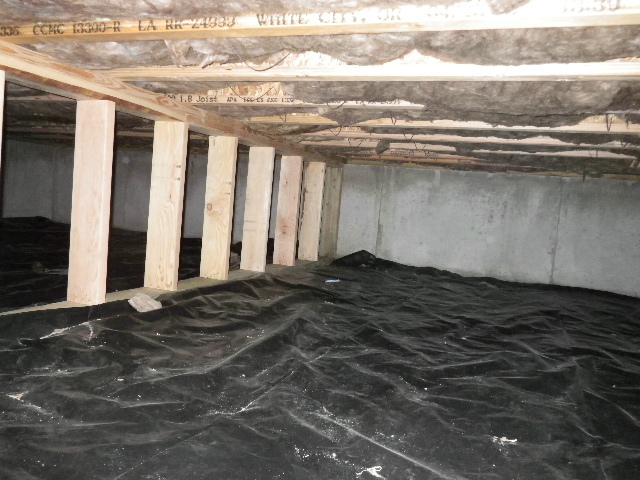 to help you visualize it. As you can see, it looks just like any other framed wall - a sole plate, a top plate, studs. The size will vary depending on how much load needs to be managed but most are either 2x4 or 2x6 pieces of lumber.
to help you visualize it. As you can see, it looks just like any other framed wall - a sole plate, a top plate, studs. The size will vary depending on how much load needs to be managed but most are either 2x4 or 2x6 pieces of lumber.
There is another similarity to the walls of your home - since this is a structural wall, it needs headers when the studs are removed just as the exterior walls have at the doors and windows.
Most of the time, these are installed automatically to make moving through the crawlspace easier - even for a skinny inspector, trying to squeeze my butt through a 14 inch opening takes a little wiggling.
Sometimes though, I find that either a plumber or the HVAC installers decided that the studs are in the way so they knock them out. No biggie, they think, quite erroneously.
Whoever installed Jack's ductwork knocked out two of the supports so instead of bracing every 16 inches as needed, the top plate spanned 4 feet. That's a long way for a 2x4 to carry load.
The 2x4 also had a knot in it at about the midpoint of the span. Knots are weaker and more prone to split. When they do, it happens fast and sounds explosive.
The effects of the HVAC contractors abuse of the foundation system aren't over. Each part of the system relies on the other parts to perform. Now the studs at either end of the opening are doing more work than they were intended so they will become increasingly likely to fail as well, and, like a set of very slow moving dominos, may affect the whole cripple wall and the interior walls above it in the living spaces.
The good news is that repairs are both possible and not very challenging or expensive. We need more support for the cripple wall on both sides of the ductwork. We also need a fix for the broken top plate - which is where I punt and suggest you need an engineer or really good structural contractor who's done these types of repairs before.
For those that are curious, this house is less than seven years old. If an inspection had been done on it at the time of purchase, the damaged cripple wall likely would have been spotted and fixed.
Blower Door Safety Switch
First, let me explain what a blower door safety switch is.
Your furnace is equipped with a plethora of safety devices - flame rollout sensors, flame sensors (not the same thing despite a similarity in name), limit switches, serviceman's switch - all designed to increase your safety. The blower door safety switch is a simple plunger that, when opened, cuts the power to your gas-fired furnace. Look to the right and you can see what they look like. Depending on the age of your furnace, you probably have one of these. The top one is for a Carrier, the bottom on is for a Ruud (I think).
you can see what they look like. Depending on the age of your furnace, you probably have one of these. The top one is for a Carrier, the bottom on is for a Ruud (I think).
If you have something 40 years old like a Lennox G8-100, forget it - the switch hasn't been around that long. However, some older models can be retrofitted. The switches are about $30-$50 - it's something to consider but the worst an inspector would be able to say about a lack of the switch is that the unit met the standards for safety at the time of construction but standards have changed and improved with the intervening years.
The purpose of the switch is to prevent your furnace from pulling toxic gases into your home. When the blower runs, it creates a powerful negative pressure zone (to test it, try removing the blower door cover with the unit running - it is much more difficult to do as the blower tries to suck the cover back on.) If you have a leak on the unit releasing carbon monoxide or especially if the furnace is located in the garage, the blower door needs to be tight to the unit to keep the gases from entering the home.
The Most Common Defect with a Blower Door Safety Switch?
Human error in the form of the service technician. The switches are reliable and usually require no maintenance to function properly. But the switch poses a problem for the HVAC tech who is working on the system. The blower compartment usually houses the motherboard for the furnace. To do any work on the board or the associated electronics in the compartment, the door needs to be removed. The system shuts down, precisely as intended.
Except the tech needs it running to perform his diagnostics. So, he tapes the switch closed and gets to work. When he finishes, he puts the cover back on, gives you the bill, and leaves. Forgotten is the piece of tape over the switch. The safety d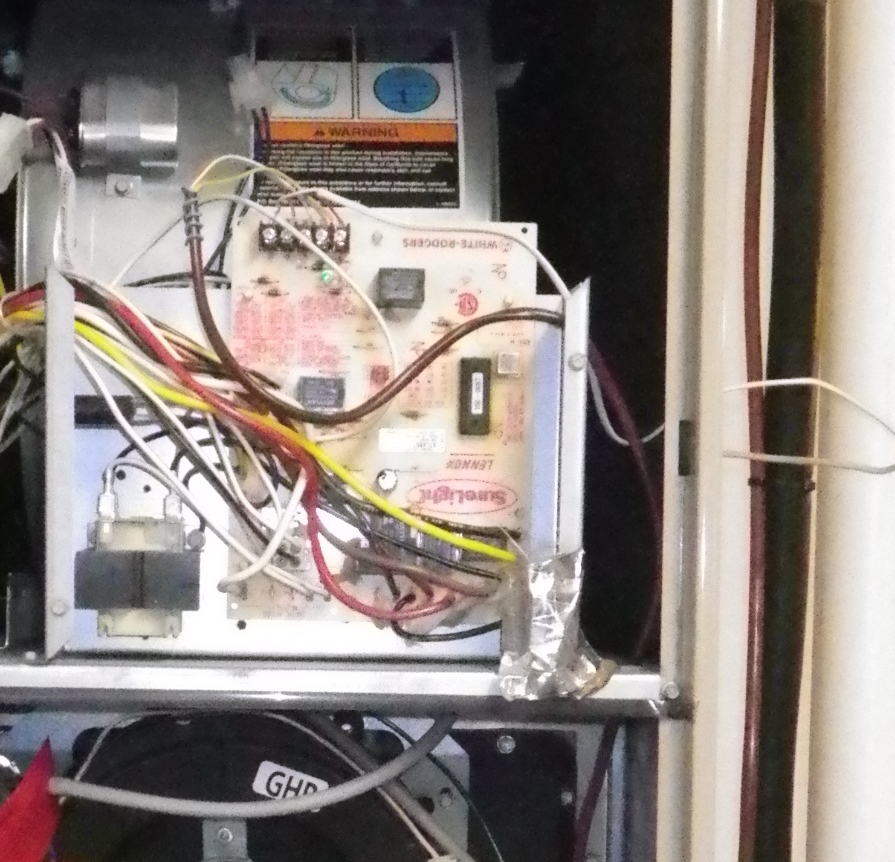 evice is no longer functioning as intended due to predictable human error. I see this about two dozen times every year, making it relatively common.
evice is no longer functioning as intended due to predictable human error. I see this about two dozen times every year, making it relatively common.
This is not meant to bash the techs. Especially since I have called more agents than I can count to ask to be let back into a home where I've managed to leave behind a tool. At one point or another, everything single tool has been forgotten, so I get it.
It also strikes me as silly to write this up as a defect and have a HVAC technician return to fix it. A service call at $60-$100 to remove tape? Nope.
I remove the tape. I'm not supposed to - it's outside my standards of practice and puts the liability on me. I calculate it to be an acceptable risk and a nice deed for the day.
I also check to make sure that the furnace is working before I leave. If it isn't, that little piece of tape goes right back on and the whole thing gets written up.
Gas Log Fireplace Maintenance
The next time you snuggle up near the warmth of a gas fireplace, ask yourself when the last time you had someone do maintenance on it. Usually ignored, gas log fireplace maintenance should be done annually just as you do with your furnace. Right, the furnace is do, too, but that's a different post.
Regular Cleaning
Most of the manufacturers of gas log fireplaces and inserts recommend having the system serviced on an annual basis. Most of this you can accomplish on your own if you are reasonably handy. Always remember to turn off the pilot and the gas to the fireplace before working on it.
Use a brush to clean the control space and the burner once you have the unit opened up. Use a very soft bristle brush to clean the logs - they tend to be fragile, so handle with some care.
Some logs, called 'yellow flame logs', require more frequent maintenance. They don't generate as much heat as the blue flamed logs but present an attractive appearance that rivals a traditional wood fire. The yellow color of the flame is a result of the carbon in the logs and, like the wood-burning fireplace, generates soot. Chimneys for these require the same maintenance as the traditional chimney.
The glass can be cleaned with a standard glass cleaner. Be careful with trim work and clean only with a damp rag - using chemicals might etch the finishes and ruin the appearance of the fireplace.
The Vent
Before you start the fireplace for the first time, check to make sure that the vent is clear of debris and dead animals. Also verify that there are no cracks or holes in the flue pipes. Check for condensation the first time you ignite the fireplace. There will be a little bit but it should burn off quickly. If it doesn't, the condensation may combine with the combustion gases and make a weak corrosive solution that can attack the metal of the flue.
Call the Pros!
The manufacturer also recommends annual service of the gas log fireplace by trained professionals. You really do need to have them come out to service the system. While you can clean and maintain the burner components and do a routine inspection of the vents, the pros can check the fuel/air mixture to make sure that the fireplace operates at optimum efficiency, check for gas leaks, and inspect the blower components to ensure the fan operates correctly.
A reminder - if you smell gas, call a service person immediately and describe to them the type and strength of the odor. Follow their instructions - if they say get out - Get Out!
A second reminder - install a carbon monoxide detector even if everything else in your house is electric. Any home with a gas-fired or wood-burning fireplace or furnace should have one.
So, the basics of gas log fireplace maintenance. Do it and enjoy the ambience all winter, worry-free.
Keep Your Water Lines from Freezing!
Yesterday morning, I had the first hard frost of the season on my truck which means it's time again to talk about how to keep your water lines from freezing.
Hose Bibs
I have a comment that is embedded in my report that I use all winter:
In winter weather, it is a good idea to remove hoses from the bibs to prevent damage from freezing.
It is such a common item that we don't even notice it. The hose is still attached to the bib - more often than not, it seems, the hose bib is a frost-free. People like frost-free bibs for good reason - having a pipe freeze and break inside a wall is a major pain. The problem is that a frost-free valve doesn't work if the hose is attached and has water in it.
The frost-free valves work by having the actual shutoff inside the mechanism inside the wall, not at the handle on the outside of the home like the old 1950's style faucets. When you turn the valve off, the remaining water drains from the spigot so that it can't freeze. A hose prevents the draining. If the water is in the line and freezes, it expands and your pipe can rupture.
Make sure you remove any splitters or quick releases - these present the same problems. Also, make sure you don't have a slow leak as the water drips can freeze up the opening acting as a cap.
I recommend putting on covers to the hose bibs for a bit of extra protection. Will the inspector remove it - probably not, in my experience.
Many older homes that lack frost-free valves have shut-offs inside the house. If yours does, use it and then open the valve on the outside. I recommend covers on all non-frost-free valves.
Interior Plumbing
If you are living in the home while it is on the market, most of this is not going to be an issue for you but if you've already moved and the house is vacant but you want the water on, I want to remind you to do a couple of things that will keep the plumbing in safe conditions.
First, leave the heat on. It doesn't have to feel like the Bahamas inside, but you should keep the thermostat set to 55 degrees or higher. Leave all the cabinet doors open below the sinks to allow heat to get to the pipes. If you are not going to leave the heat on at all, you have to fully winterize the home. I will talk about winterization in another post next week . . .
Second, make a decision on whether you want to turn the water off to the home. If you turn it off, crack open the valves and drain the system as best you can. Leave a couple of the faucets open to allow the pressures to stabilize.
If you leave it on, ask your Realtor to check in on your property at least weekly. Some inspectors will also perform this service, so ask around. What you want from them is a visual inspection of the plumbing. In bitterly cold conditions, these visits should be done daily. It may cost a bit on money but I can promise you that the expense is less than that of spraying water and a flooded house.
In extreme conditions, the hot and cold water should be left on a trickle. As anyone who has paid attention to a river realizes, moving water is less likely to freeze.
Plumbing pipes at exterior walls, in unheated basements, and the crawlspace are most in danger. You may need additional heat or a heat tape in these locations. Any plumbing that is in unheated spaces should be insulated but, by the time you move out, it's probably too late unless you want to spend the extra money for your buyer. You should know that Washington State Standards of Practice mandate that we identify these in the report though we are required to recommend upgrading - for now, at least.
Don't forget the fixtures - and the water heater!
The toilet reservoir holds up to three gallons of water. Having that water turn into a block of ice - or worse, having the water heater freeze - can be disastrous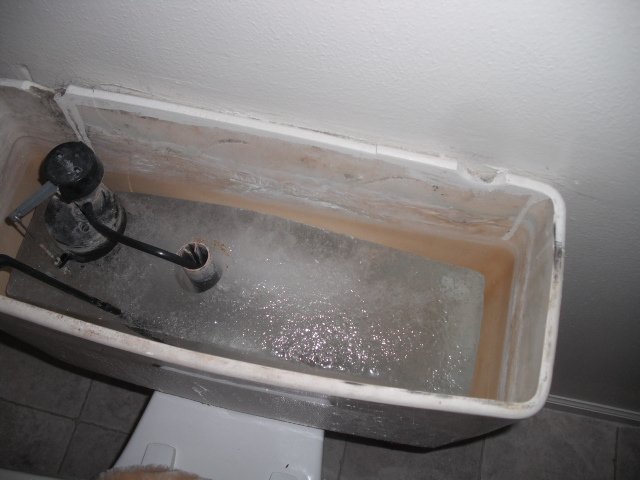 . The picture to the right is from an inspection I did two winters ago. The seller eventually spent thousands of dollars to make the necessary repairs.
. The picture to the right is from an inspection I did two winters ago. The seller eventually spent thousands of dollars to make the necessary repairs.
If the heat is off, it is imperative that you, at a minimum, drain the toilets. If you turn the water heater off, drain it as well.
And, for what it is worth, the agent had recommended a full winterization. It was excellent advice and would have saved this seller a goodly chunk of cash.
It would have also kept the buyer from freaking out - and to be clear, this inspector is not a big fan of plumbing problems. They often end up more complex than first realized and always seem to involve a combination of multiple trips to the hardware store, bad language, and a good plumber.
A good agent is worth his or her weight in gold - please listen to them if they say you should winterize to keep your water lines from freezing. And follow the other steps above even if you are occupying the home. Especially those pesky hose bibs.
Calibrate the Radon Detector
To stay on the good side of the EPA guidelines, any person or organization must calibrate the radon detector - or if using a passive system, provide calibrate spikes to determine accuracy, at least annually to ensure the testing equipment is giving valid results. What this means at a practical level is that for three weeks of every year, my radon detector is not available. I use a pair of Sun Nuclear 1028 model monitors to provide testing in Moscow (an EPA Zone 1 area) and Pullman (an EPA Zone 2 area). To calibrate them, I have to contact Sun Nuclear, arrange for the service and return shipping (about $160 per unit), package it up on my end to send to Florida and then sit, twiddling my thumbs while they calibrate the radon detector.
That's for one unit - I get to repeat this for the second unit as soon as the first gets back. I deliberately run a staggered cycle so I always have one unit ready to go.
Sun Nuclear also sends back a Radon Certificate of Calibration for each unit. If you want to read an example, here is the Radon Certification of Calibration for one of my units. Obviously, this one will be sent out shortly for fine-tuning as the cert is up on November 2nd.
One significant point is that there is no tracking of calibration done in either Washington or Idaho. This means that if you are a buyer or a seller (why sellers? see below!), you need to verify that the machines in use are properly calibrated so that you get accurate results. Ask to see the paperwork - don't take the inspector's word for it. As much as I want to believe every inspector is from Lake Wobegon and is above average, the reality is that there are some folks who refuse to follow this simple process.
For Sellers
It is crucial for you to verify the accuracy of the equipment used in your home. Should the results come back at a level that the EPA recommend remediation, you might lose the sale with the reputation of your home damaged (worst case) or be on the hook for the cost of the remediation - $1,800-$3,000 in my area.
Ask to see the documentation as part of the radon report - my particular equipment gets the date reset by the testing lab when they calibrate the radon detector. This isn't true of all labs so ask, ask, ask for the paperwork.
Home Inspection Guide for the Home Seller
Home Inspection Guide for the Home Seller
Congratulations! You have an offer on your home and the inspection date and time have been set. Now, let’s try to make this work as easily as possible for everyone and have an inspection process that helps you get to a successful closing.
First, let’s take care of some basic maintenance issues that might distract from the inspection:
- Have you changed the furnace filter recently? A dirty filter will be mentioned in the report and causes the buyer to question other issues like the ductwork and cleanliness.
- Are all the light bulbs working? Test your interior and exterior lights. If some switches are don’t make sense after a remodel in 1962, leave a note for the inspector explaining what switches turn on which item.
- Do you have new batteries in the smoke alarms? Many inspectors will test these using the button. If the batteries are weak, the alarms will start to chirp alerting the buyer to look for other items that haven’t been serviced lately. You should have a smoke detector in each bedroom and one per floor.
- Do you have a carbon monoxide detector? One per floor is recommended.
- Are the windows and doors working smoothly? Sticky doors and windows will get noted in the report so doing a little light maintenance may go a long way.
- Provide keys, or unlock sheds and all outside buildings.
- If you haven’t cleaned the gutters recently, consider doing this before the inspection.
- Trim the shrubs and trees around the home. This serves two purposes. First, well formed shrubs and trees enhance the curb appeal of the home. Second, the inspector can get to the areas on the exterior walls to report accurately what is there instead of making comments about potential pest intrusion and water damage.
- Cleaning is tough. You’ve been doing it while you’ve been showing the house and –success! – you have an offer. Please maintain your momentum and keep cleaning. Buyers react negatively when they house was spotless for the showing but messy for the inspection. It also makes it tough for the inspector by obscuring outlets, floors counter tops, etc., while slowing down the inspection.
Home inspectors are also not required or advised to move personal items that are blocking access to areas that need to be inspected. This may result in an incomplete inspection, call backs, additional fees and a frustrated buyer. It is to your best advantage to provide easy access to the following areas:
- Main electrical panel.
- Electrical sub panels.
- Attic access door. This may be in a closet, hallway or garage.
- Under room crawlspace access doors, including stored items in the space.
- Water mains.
- Hot water heater and surrounding area.
- Furnace and surrounding area.
Last but not least…I love animals and, for the most part, they love me back. But having strangers intrude into their home can be very stressful for your pet. Try to find a safe location for them. Cats are usually self-sufficient but dogs need some security. Sometimes this may mean taking them to a friend or relative. If you have no alternative but to leave them at home, consider providing them with a comfortable kennel and some water rather than locking them in a room or the garage. Many inspectors will not enter a space with an unfamiliar dog no matter how friendly it seems.
Best wishes and Good Luck!
Paul Duffau
PS. any Realtors that would like to use this letter, please feel free but let your client know where you got it. Many thanks!
Your Home Inspection Report is Confidential Info
 Your Home Inspection Report is Confidential Info
Your Home Inspection Report is Confidential Info
About twice a year, I end up explaining to a peeved Realtor that I can't send them copies of inspection reports because the information is confidential and it violates state regulations to release it without the customer's permission.
The last time I pointed this out, the Realtor sent me an email that I took as disagreeing with this. To quote, "Paul that is stupid..." I had sent a copy of the report to a partnering agent who apparently did not realize that it landed in his junk folder and she didn't see why I couldn't send it to her since they share an office.
The answer was that I am not permitted to. Here's the relevant Washington Standard:
308-408C-020WAC 308-408C-020 Ethics. Statement of purpose
In order to ensure the integrity and high standard of skill and practice in the home inspection profession, the following rules of conduct and ethics shall be binding upon the inspector. The home inspector must:
(10) Not disclose information contained in the inspection report without client approval or as required by law.
Seems clear enough. In this particular case, I did the inspection for a person buying the home on a For Sale by Owner basis but was seeking advice from a licensed Realtor. All good, except that at the inspection, he didn't provide me with that information so that I could pre-clear the sending of the report.
By pre-clear, I mean that I have a spot in the Inspection Agreement where the customer can affirmatively check a box that gives me permission to disclose his or her inspection information to his or her agent. It still wouldn't have gotten the report into the hands of the second agent, though.
There is an exception:
However, at their discretion inspectors may disclose when practical observed safety or health hazards to occupants or others that are exposed to such hazards.
If the gas odor clubs me at the door of the house (and it happens more than you think), I can notify the occupants or others that the condition exists. That doesn't mean that I'm calling Avista to have them fix it. That's miles beyond the scope of my authority. But I can act in the interest of public safety and disclose information.
So, the bottom line for the customer. Your home inspection report is confidential information and you don't have to share it. Certainly, your inspector should never share it without your say-so.
Should the Seller Hire an Inspector? Part 3
This is Part 3 of Should the Seller Hire an Inspector? Feel free to offer comments and suggestions.
How to Pick your Inspector
One of the best compliments I ever received came from a client who had used me on a small commercial project. The project was interesting - a turn-of-the-century storefront. He called me up later to inspect his home before he sold it. His reasoning? He wanted to take the best home inspector off the market forcing the buyers to select a lesser inspector.
I am going to presume that you, like most people, do not have a home inspector on speed dial. If you decide that a pre-listing inspection makes sense for you, let’s look at the factors that you will need to evaluate in order to hire the right inspector.
Experience. You need to have an inspector that has the professional background - education, time in the field, previous occupations - to be as thorough as possible. You should expect no less than five years of inspector experience in you region. Previous experience in the building trades or as a code certified inspector is a plus.
Licensed. Not every state has licensure but if yours does, your inspector must be licensed. If things get contentious, the more qualified your inspector, the more likely you are to prevail. Licensing is the entry level requirement. Look for additional certifications from ASHI (American Society of Home Inspectors) or NAHI (National Association of Home Inspectors). Ask to see copies of his professional license as well as any applicable business licenses.
Reports. You need a detailed report preferably in a narrative format that will detail the specific condition that needs correction. The inspector should be willing to do a follow-up inspection to document that repairs were made. Expect to pay extra for this service.
Insured. As I mentioned before, the inspector should be carrying E&O insurance as well as General Liability insurance. Ask to see copies of his insurance binders.
You will note that I did not specify the fee. While the fee is important to you, we are looking for a level of exceptional service. A typical home inspection is going to cost somewhere between $300 and $500 depending on your region, the size of your home and the level of services involved. Each region will have different pricing structures with some adding for building elements such as crawlspaces or charging extra for older homes. Definitely ask but be aware that the low cost bidder is likely the one that lacks the other primary credentials that you need.
Another element to look for is a guarantee from the inspector. When I do a pre-listing inspection, I offer the following promise:
I guarantee my inspection like this: if another inspector working for the buyer finds something that I missed that is included in my Standards of Practice, I’ll pay for the repairs up to the cost of your inspection.
Most inspectors are not going to voluntarily offer a guarantee so it’s up to you to ask. The best inspectors will have some way of backing up their work. Those are the ones that you want to work with.
Speaking of services, I will be covering environmental issues in Chapter 8 along with some of the specialty inspections that are offered in the marketplace. I do not necessarily recommend that you do all of them but I want you to be aware of them so that you are not surprised if your buyer decides to access a higher level of information.
For now, you have enough information to have a candid conversation with your real estate agent. Discuss with them the advantages and disadvantages of performing a pre-listing inspection on your home and make the decision from an informed basis.
This is the final installment of the article, Should the Seller Hire an Inspector? If you found it helpful, drop me a note. If you have suggestions, I would love to hear from you.
Re-Tooling the Inspection Report
Well, it's back to the drawing board for my inspection report. One of the reasons I chose the software I have is to be able to periodically improve my report. That never happens in the summer, of course, because I'm entirely too busy. Now that things are slowing down for the season, I can make all the adjustments on all the stuff that has been annoying me for the last six months, plus add in all the suggestions that clients and agents have made.
As an industry, this is one weakness that I have observed. The inspector gets married to a single method of reporting and simply never changes it. There are inspectors in my area still using the exact same reporting system that they started with years ago. News flash - the standards are constantly evolving and the inspector ought to as well.
By next month, I should have the system rebuilt. One of the goals is to greatly increase the detail of the descriptions. Many agents will consider this to be TMI - Too Much Information - but I see large changes ahead for the inspection industry. I'd rather ride the wave of the change than get drowned in it.
Improving the Inspection Report is just one small part of riding that wave.
Washington State License #215
Former SBCC Member, Former Chairman State Home Inspector Advisory Licensing Board.
